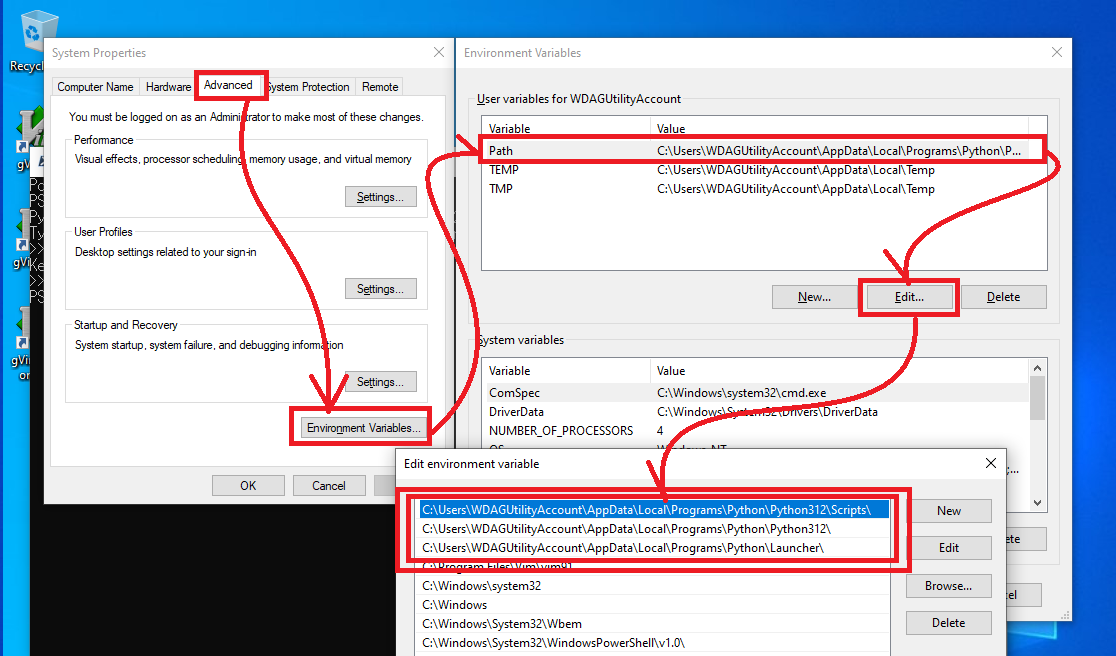Install-Software "Python"
Install the "Python" programming language using WinGet.
Introduction
Python is a simple and versatile programming language. It is used in a wide range of fields such as web development, data analysis, and AI, and is easy for beginners to handle. This site uses it for purposes such as plotting charts, math/scientific calculations, and image processing.
Key point: PowerShell’s versatility extends beyond running Python; it serves as an execution environment for a multitude of programming languages. The power of “glue languages” like PowerShell, in my view, lies in their ability to seamlessly connect and integrate diverse programming ecosystems.
Prerequisites
- ✓ Install PowerShell
- ✓ Install WinGet
- ✓ Verified environment is here
Installation
Here’s how to install using the package management tool “WinGet ”.
First, Launch Command Prompt or PowerShell with Administrator privileges:
- START MENU → Type
cmdorpwsh - Click “Run as administrator”
Check the latest version:
winget search Python.Python.3
Name Id Version Source
----------------------------------------------
Python 3.0 Python.Python.3.0 3.0.1 winget
Python 3.1 Python.Python.3.1 3.1.4 winget
Python 3.10 Python.Python.3.10 3.10.11 winget
Python 3.11 Python.Python.3.11 3.11.9 winget
Python 3.12 Python.Python.3.12 3.12.9 winget
Python 3.13 Python.Python.3.13 3.13.2 winget
...
Install. Specify the confirmed ID and Source as follows:
winget install --id Python.Python.3.12 --source winget -e
Verification
The Path Verification
Verify that the path to the Python execution folder is correctly set in the “User environment variables” by following the steps below.
- Search from the Start Menu
- START MENU → Type
env - The search result displays “Edit system environment variables”, so click on it
- START MENU → Type
- Open the environment variable window
- “System Properties” window → “Advanced” tab
- Click the “Environment Variables” button
- “User environment variables” section → Select “Path” → Click the “Edit” button
- Verify environment variables
- Verify the following environment variables. If they don’t exist, add them
(for the scenario where user btklab installed Python.3.12):
- Verify the following environment variables. If they don’t exist, add them
C:\Users\btklab\AppData\Local\Programs\Python\Python312\Scripts\
C:\Users\btklab\AppData\Local\Programs\Python\Python312\
C:\Users\btklab\AppData\Local\Programs\Python\Launcher\

Python Startup Test
Try running Python with the following steps to verify that the path setting is correct.
If Python
is installed correctly, you can start it by typing python on the shell:
- Close the shell and reopen it
- Type
python --version
python --version
Output:
Python 3.12.9
The following is a failed example: possible causes include, for instance, a failed Python download or the path not being set.
Python was not found; run without arguments to install from the Microsoft Store, or disable this shortcut from Settings > Manage App Execution Aliases.
Terms

- Python
-
Python is a simple and versatile programming language. It is used in a wide range of fields such as web development, data analysis, and AI, and is easy for beginners to handle. This site uses it for purposes such as drawing charts, scientific calculations, and image processing.
-
By the way, “The Zen of Python” is an Easter egg built into Python. You can display it by starting the Python interactive window and typing
import this. -
The Zen in Japanese is The “禅” (ぜん:zen). “禅” in Japanese means the teachings of Zen Buddhism, a sect of Buddhism, or its training methods. (The “禅” evokes the image of “座禅” (ざぜん:za-zen) from my experience). On the other hand, “The Zen of Python” is an essay that concisely summarizes the design philosophy in programming, emphasizing simplicity and clarity.
-
The two “Zen” concepts — Japanese “Zen” and Python’s “Zen” — may appear to belong to different realms, but they share a common principle: “an emphasis on simplicity and the elimination of waste.”
